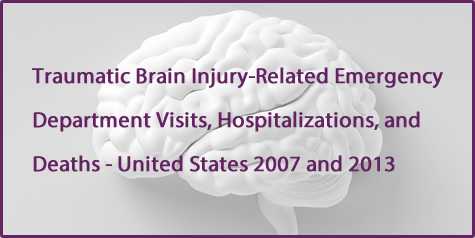CDC defines a traumatic brain injury (TBI) as a disruption in the normal function of the brain that can be caused by a bump, blow, or jolt to the head, or penetrating head injury. Everyone is at risk for a TBI, especially children and older adults.
CDC’s research and programs work to prevent TBIs and help people recognize, respond, and recover if a TBI occurs.
News and Announcements
- Traumatic Brain Injury–Related Emergency Department Visits, Hospitalizations, and Deaths — United States, 2007 and 2013
- New: Rocket Blades Mobile App for Kids
- CDC Feature: TBIs and Injuries
- Falls are taking a huge and rising toll on elderly brains
- Out-of-Hospital Triage of Older Adults With Head Injury: A Retrospective Study of the Effect of Adding “Anticoagulation or Antiplatelet Medication Use” as a Criterion
- Screening for Post-Traumatic Stress Disorder in a Civilian Emergency Department Population with Traumatic Brain Injury
- Page last reviewed: July 6, 2017
- Page last updated: July 6, 2017
- Content source:
- Centers for Disease Control and Prevention,
- National Center for Injury Prevention and Control,
- Division of Unintentional Injury Prevention


 ShareCompartir
ShareCompartir





